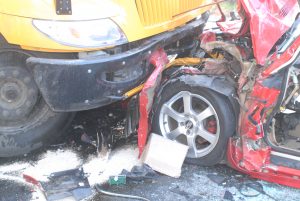It is not too early to consider what the Massachusetts Supreme Judicial Court’s decision in Nguyen v. Massachusetts Institute of Technology, 479 Mass. 436 (2018) means for Institutions of Higher Education [IHEs], students and courts. Attorney Jeffrey S. Beeler, at this firm, was counsel for the Nguyen Estate in this case against the Massachusetts Institute of Technology [MIT]. Some initial observations about Nguyen v. Massachusetts Institute of Technology [MIT] are warranted.
First, the Supreme Judicial Court [SJC] made clear – again – that IHEs are “clearly not bystanders or strangers in regards to their students.” Nguyen, 479 Mass. at 450 (citing Mullins v. Pine Manor College, 389 Mass. 47, 51-52 (1983)). The era of IHE “bystander” non-liability is over.
Second, while breaking new ground in accord with long-standing principles of negligence law, the Court held that IHEs and their employees have “a special relationship with a student and a corresponding duty to take reasonable measures to prevent [a student’s] suicide” in three circumstances. Nguyen, 479 Mass. at 453. They have an affirmative “duty to take reasonable measures under the circumstances to protect the student from self-harm[,]” where they have “actual knowledge” of: (1) a student’s suicide attempt that occurred while enrolled at the [IHE]; (2) a student’s suicide attempt recently before matriculation; or, (3) a student’s stated plans or intentions to commit suicide. See id. at 453-454. In such circumstances, “suicide is sufficiently foreseeable as the law has defined the term, even for [IHE] nonclinicians without medical training” to owe a duty. See id. at 455. The duty, at least for nonclinicians, is “limited to initiating the [IHE’s] suicide prevention protocol, and if the school has no such protocol, arranging for clinical care by trained medical professionals or, if such care is refused, alerting the student’s emergency contact[,]” — often a parent. Id. at 457. Among the reasonable measures noted by the SJC for IHEs are: (1) initiating the IHE’s suicide prevention protocol, if any; (2) requiring the IHE employee who learns of a student’s suicide risk to contact the IHE employee(s) empowered to assist the student in getting professional mental health support; (3) contacting the student’s emergency contact (often the parents) if the student is resistant to intervention; and, (4) “obviously[,]” in emergency situations, contacting police, fire, or emergency personnel. See id. at 456.




